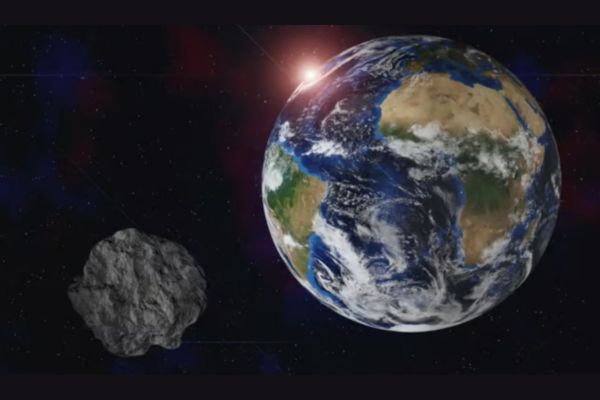NASA Alerts As Asteroid 2024 KN1
NASA has recently issued an alert regarding **Asteroid 2024 KN1**, a celestial body the size of an **88-foot airplane** that is making its way towards Earth. This significant event has drawn attention from scientists, astronomers, and the public alike. In this detailed article, we will delve into the specifics of Asteroid 2024 KN1, its potential impact, NASA’s alert system, and what it means for Earth.
Understanding Asteroid 2024 KN1
Asteroid 2024 KN1 is a Near-Earth Object (NEO) that was discovered by NASA’s Near-Earth Object Observations (NEOO) Program. This program is responsible for identifying and tracking asteroids and comets that could potentially pose a threat to our planet. The asteroid, measuring approximately 88 feet in length, is comparable in size to a small commercial airplane.
Composition and Characteristics
Asteroids like 2024 KN1 are composed of various materials, including rock, metal, and other elements. The precise composition of 2024 KN1 is still under study, but it is believed to contain a mix of **nickel, iron, and silicate minerals**. Understanding the composition of asteroids is crucial for scientists as it helps in predicting their behavior and potential impact.
Orbit and Trajectory
The orbit of 2024 KN1 is what classifies it as a NEO. Its trajectory brings it into close proximity with Earth, which is why it has garnered significant attention. Using advanced tracking and predictive algorithms, NASA has been able to plot the asteroid’s course with great accuracy. According to current data, 2024 KN1 will pass by Earth at a distance that is considered safe but close enough to warrant monitoring.
NASA’s Asteroid Alert System
NASA’s alert regarding Asteroid 2024 KN1 is part of its comprehensive effort to monitor and mitigate potential threats from space. The Near-Earth Object Observations Program, also known as *Spaceguard*, is tasked with discovering, characterizing, and tracking NEOs.
Detection and Monitoring
The detection of asteroids like 2024 KN1 relies on a network of telescopes and observatories around the world. These instruments are constantly scanning the sky for objects that move against the background stars. Once an object is detected, it is tracked and its orbit is calculated. This process involves the use of both ground-based telescopes and space-based instruments.
Risk Assessment
Upon detection, each NEO is assessed for its potential risk to Earth. This involves calculating its orbit, size, composition, and velocity. The data is then used to determine the likelihood of an impact. In the case of 2024 KN1, the risk assessment has indicated that while the asteroid will pass close to Earth, it does not pose an immediate threat.
Public Alerts and Information Dissemination
When a potential threat is identified, NASA issues alerts and updates to inform the public and relevant authorities. These alerts are disseminated through various channels, including NASA’s website, social media, and partnerships with other space agencies. The goal is to ensure that accurate and timely information is available to prevent misinformation and panic.
Potential Impact Scenarios
While Asteroid 2024 KN1 is not expected to collide with Earth, it is essential to understand the potential impact scenarios of an asteroid of this size.
Impact Effects
If an asteroid the size of 2024 KN1 were to impact Earth, the effects would be significant but not catastrophic on a global scale. The primary impact zone would experience a massive explosion, resulting in a crater and widespread destruction. The energy released would be comparable to several megatons of TNT, capable of causing substantial damage within a localized area.
Mitigation Strategies
NASA and other space agencies are actively researching methods to mitigate the threat of potential asteroid impacts. Some of the strategies under
consideration include:
*Deflection Techniques*: Altering the course of an asteroid using methods such as kinetic impactors, which involve sending a spacecraft to collide with the asteroid to change its trajectory.
*Nuclear Explosions*: Using nuclear devices to disrupt or deflect the asteroid. This method is considered a last resort due to the potential risks and uncertainties involved.
*Gravitational Tractor*: Deploying a spacecraft to fly alongside the asteroid and use its gravitational pull to gradually alter the asteroid’s path.
Historical Context and Future Preparedness
The threat of asteroid impacts is not new. Throughout history, Earth has experienced numerous collisions with celestial objects, some of which have had profound effects on the planet’s environment and life forms.
Notable Impact Events
The Chicxulub Impact*: Approximately 66 million years ago, an asteroid impact in present-day Mexico is believed to have caused the extinction of the dinosaurs.
*Tunguska Event*: In 1908, an asteroid exploded over Siberia, flattening over 2,000 square kilometers of forest.
These events highlight the importance of continued vigilance and preparedness in monitoring and responding to potential asteroid threats.
Technological Advancements
Advancements in technology have significantly improved our ability to detect and track NEOs. Modern telescopes, radar systems, and space missions provide detailed data on the characteristics and trajectories of these objects. Initiatives like the *Double Asteroid Redirection Test (DART)* mission aim to test our ability to alter the course of an asteroid.
Also Read:-Karol G’s Mañana Será Bonito Tour Takes Over London’s O2 Arena

